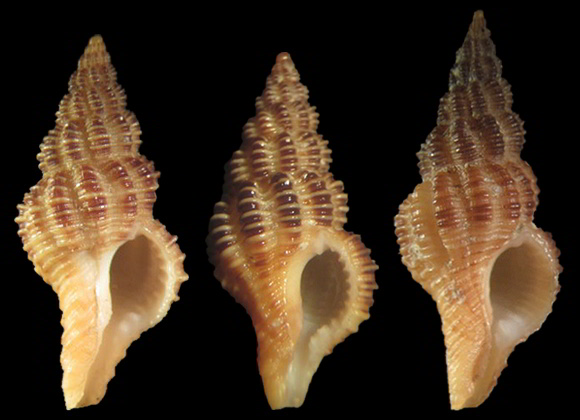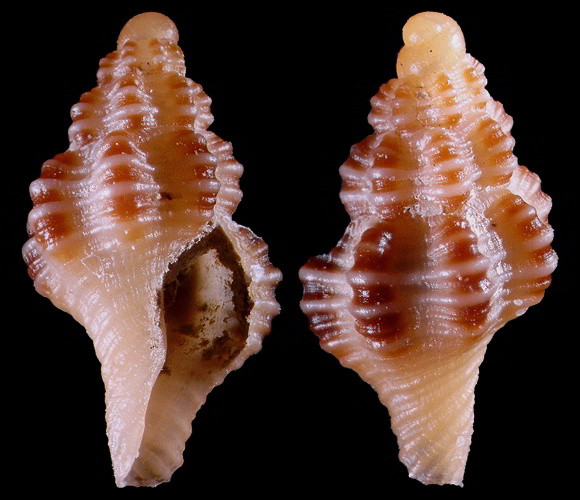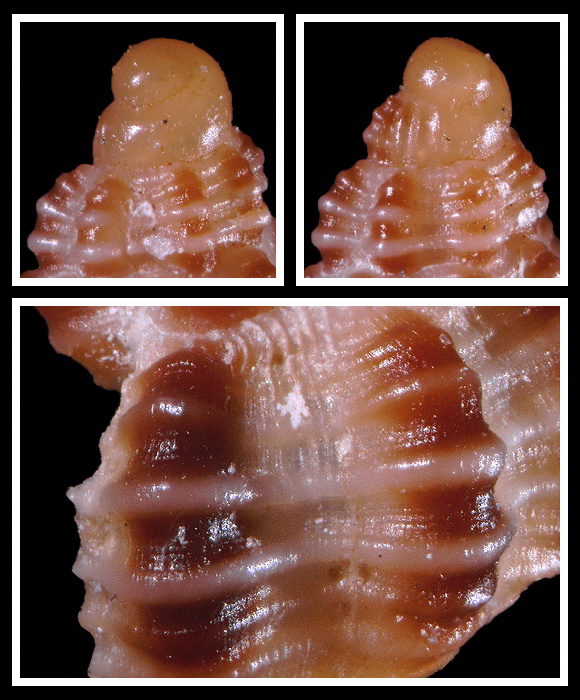(Monterosato, 1884)

Predator in the infralittoral-circalittoral.
Original taxon: Pseudofusus labronicus.
« Shell small, heavy, stubby, thick, opaque, made up of 6.5 rounded whorls, the last of which is broad and inflated. Protoconch formed by about 1.5 spiral whorl […]. There is no trace of fairing. Colour light yellowish-brown with much darker brown axial ribs, well separated from each other, in the number of 9-10 for each whorl. The axials cover the entire whorl, from suture to suture. The whorls are decorated with 5, sometimes 6, spiral cords of the same colour than the surface of the shell; they are quite prominent and surmount the axial ribs… » – P. Russo: “La Famiglia dei Fasciolariidae Gray, 1853 (Gastropoda: Buccinoidea) nel Mare Mediterraneo”, Alleryana, Bologna 2019, p.27.
In tide pools, Livorno, Toscana, W. Italy. Sizes circa 19-21mm. Original pictures provided by F. Chiriaco (IT).
– (CC BY-NC-SA) –

« …no intermediate cords; the ornamentation continues, rather marked, along the siphonal canal. Suture conspicuous, slightly canaliculated. The last whorl features 9-10 axial ribs and about fifteen spiral cords, some secondary, which reach the end of the siphonal canal. This one is stubby, short and slightly deviated to the left. Columella smooth, broad, calloused, decidedly expanded, where a parietal tooth is noted. Aperture oval and narrow. Outer lip thickened, the inside of which is adorned with 10-12 teeth. Operculum ovate, with lateral apical nucleus of brown colour. Dimensions up to 20mm. » – Ibid.
Young specimen from 40m deep, off Le Scole, Isola del Giglio, Toscana, W. Italy. 5mm.

The transition protoconch - teleoconch begins by some radial sculpture (here two ribs), immediately followed by three spiral cords, the number of which being rather reduced due to the immaturity of the shell. Notice, near the aperture, some spiral microribbing appearing between the cords; it is crossed by some thin commarginal folds that are especially strengthened just below the suture, where they cover the ancient sites of the posterior siphonal notch.